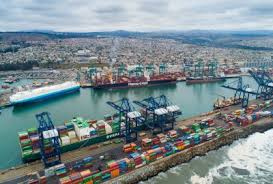How does local cuisine reflect the culture of San Antonio Chile?

How does local cuisine reflect the culture of San Antonio Chile?
How does local cuisine reflect the culture of San Antonio Chile? San Antonio, Chile, boasts a rich culinary landscape that reflects its coastal geography, cultural influences, and agricultural abundance.
The local cuisine is a vibrant blend of traditional flavors, seasonal ingredients, and cultural heritage.
Seafood as a Staple
Given its coastal location, seafood plays a central role in San Antonio’s culinary identity. Fresh catches from the Pacific Ocean, such as fish, shellfish, and octopus, are integral to local dishes.
Traditional preparations, like ceviche, highlight the freshness of the seafood, showcasing the region’s maritime bounty.

Traditional Dishes
Local cuisine features several traditional dishes that embody Chilean culture. “Pastel de Choclo,” a corn pie filled with meat, olives, and hard-boiled eggs, is a beloved dish in the region.
Another favorite is “paila marina,” a hearty seafood stew that reflects the rich maritime heritage of San Antonio.
Influence of Indigenous Ingredients
The influence of indigenous cultures is evident in the use of local ingredients. Quinoa, maize, and various beans are staples in traditional dishes.
These ingredients not only add flavor but also highlight the agricultural practices of the region, connecting residents to their land.
Festive Foods
During local celebrations and festivals, specific dishes take center stage, further enriching the culinary experience. For example, during Fiestas Patrias (Independence Day), traditional foods like empanadas and asados (barbecued meats) are commonly served.
These festive foods create a sense of community and cultural pride, bringing people together to celebrate their heritage.
Street Food Culture
San Antonio also features a lively street food scene, where vendors offer quick bites that reflect local flavors. “Completo,” a Chilean hot dog topped with various ingredients, and “choripán,” a chorizo sandwich, are popular choices.
These street foods offer a taste of local life and provide a casual way to experience the region’s culinary offerings.
Influence of Immigrant Communities
The culinary landscape of San Antonio has also been shaped by immigrant communities, adding diversity to the local cuisine. Italian, German, and other European influences can be seen in various dishes and cooking techniques.
This blend of cultures enriches the food scene and showcases the city’s multicultural heritage.
Sustainable Practices
Many local chefs and home cooks emphasize sustainable practices, sourcing ingredients from local markets and fishermen. This commitment to sustainability not only supports the local economy but also fosters a deeper connection to the land and sea.
Seasonal menus that highlight fresh produce and seafood reflect a growing trend towards eco-conscious dining.
A Flavorful Reflection of Culture
The local cuisine of San Antonio, Chile, is a delicious reflection of its culture, geography, and history. With an emphasis on seafood, traditional dishes, and seasonal ingredients, the culinary scene is vibrant and diverse.
Through food, the residents of San Antonio celebrate their heritage, foster community connections, and embrace the flavors of their land and sea.





Leave a Reply